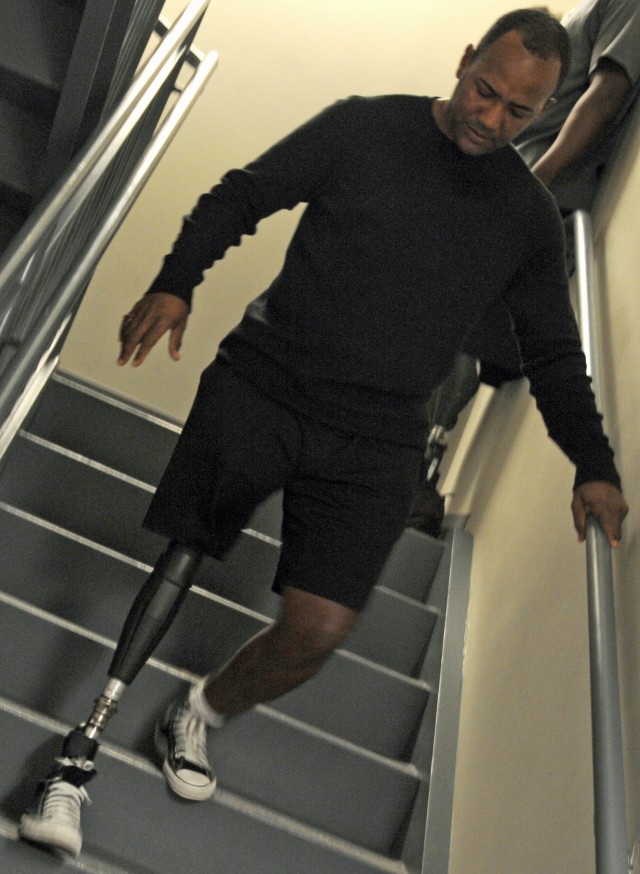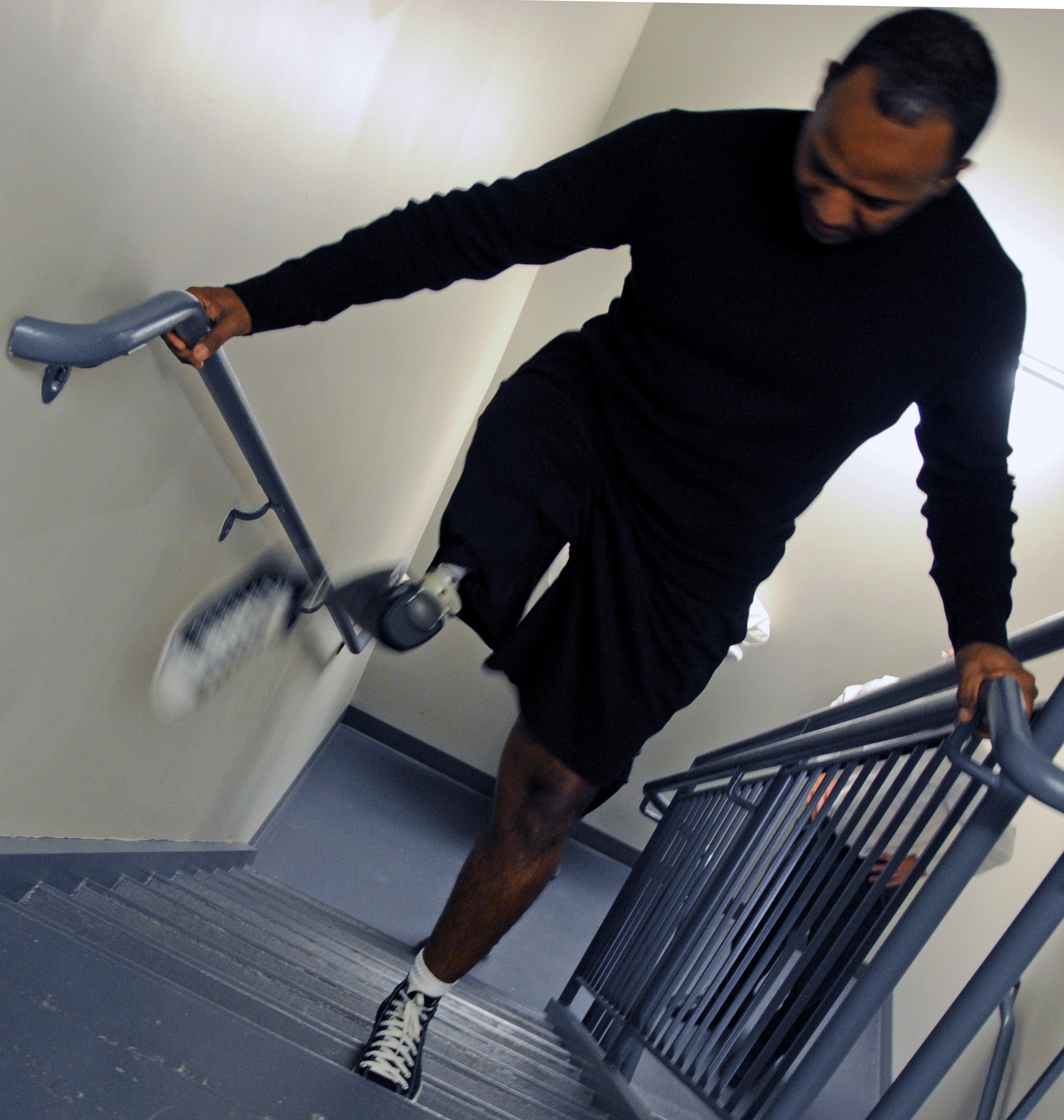WASHINGTON (Dec. 10, 2009) -- Several wounded warriors at Walter Reed Army Medical Center are testing a new microprocessor-controlled prosthetic knee.
The X2 microprocessor knee, the result of a medical research project, is being used by some amputees at Walter ReedAca,!a,,cs Military Advanced Training Center.
With the older C-Leg, many patients were dealing with knee and joint pain and once they began wearing the new X2, the patients saw relief almost immediately, said Adele Levine, a physical therapist at the center.
Marine Gunnery Sgt. Marcus Wilson, one of patients at Walter Reed testing out the microprocessor knee, said Aca,!A"once I got the confidence to trust the leg, that it would do what it was supposed to do, I almost got immediate relief. No knee pain, hip pain, everything evened out.Aca,!A?
He shared that the leg has given him the ability to stand in any position and rest on the amputated side relieving pressure on his intact leg.
He also shared that the X2 has given him the ability to run again without having to switch to another leg.
The X2 microprocessor knee by Otto Bock HealthCare is the result of a project funded in support of the Military Amputee Research Program. The project is administered by the Telemedicine and Advanced Technology Research Center, or TATRC.
The project had the goal of developing "an electronically controlled prosthetic knee joint that meets the specific demands of military staff in real-world activity," said Troy Turner, Advanced Technology Research program manager at TATRC.
In 2005, the TATRC staff recognized that even the cutting-edge prosthetic devices werenAca,!a,,ct good enough, Turner said.
Aca,!A"Otto Bock had the C-Leg, it was the best that was available, but not the best needed,Aca,!A? Turner said. He also said that they realized Soldiers needed a prosthetic knee with a longer battery life, the ability to walk and run backward and forward and go up stairs foot over foot.
Otto Bock developed a proposal that was later funded and has developed a new knee that has more durability and functionality, extended battery life, remote control functions and can handle higher weight limits.
Staff Sgt. Alfredo De Los Santos has been using the new X2 microprocessor for a little more than two weeks.
Aca,!A"Ever since I got this leg it's been heaven. I went to Busch gardens. I walked all day long. I only take it off when I go to sleep at night,Aca,!A? he said.
De Los Santos, who works out two or three times a day and recently participated in the Army Ten-Miler and the Marine Corps Marathon using a hand-crank said that before using the X2 he would occasionally use canes to alleviate some of the back pain he was having because he enjoys being so active.
Aca,!A"Now I can jump and mostly do everything,Aca,!A? he said.
Levine said that with the X2 De Los Santos has alleviated a lot of his previous concerns about the pressure he was putting on his intact side and his concerns with quality of living.
Aca,!A"He is so much happier, he tells us this at least 20 times a day,Aca,!A? she said. HeAca,!a,,cs always concerned about the future and his condition in 20 years; this gives him a lot of hope.Aca,!A?
The knees are currently being fitted on 30 wounded warriors at Walter Reed and Brooke Army Medical Centers and are expected to be widely available in 2011.
When asked about his hope with the X2 De Los Santos said, "ItAca,!a,,cs what you make out of it. If you can do this, you can do anything -- you can accomplish anything, and you have to make the decision to make it work.Aca,!A?
(Christen N. McCluney works in the Defense Media ActivityAca,!a,,cs Emerging Media Directorate.)




Social Sharing